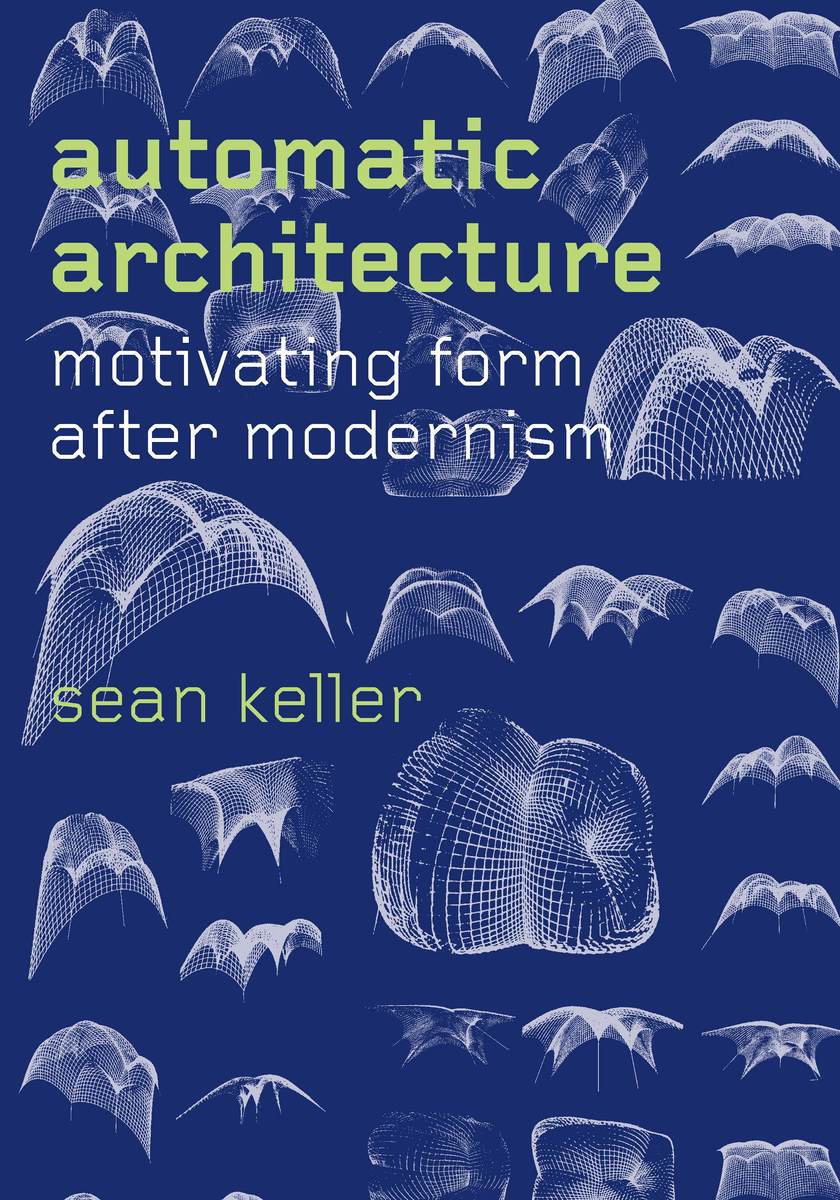Automatic Architecture
Motivating Form after Modernism
University of Chicago Press, 2017
Cloth: 978-0-226-49649-8 | Electronic: 978-0-226-49652-8
DOI: 10.7208/chicago/9780226496528.001.0001
Cloth: 978-0-226-49649-8 | Electronic: 978-0-226-49652-8
DOI: 10.7208/chicago/9780226496528.001.0001
AVAILABLE FROM
University of Chicago Press (cloth, ebook)Amazon Kindle
Barnes & Noble Nook
DeGruyter Multi-User Ebook Program
EBSCO eBooks (formerly NetLibrary)
Google Play
Kobo
University Press Scholarship Online (UPSO)
ABOUT THIS BOOKAUTHOR BIOGRAPHYREVIEWSTABLE OF CONTENTS
ABOUT THIS BOOK
In the 1960s and ’70s, architects, influenced by recent developments in computing and the rise of structuralist and poststructuralist thinking, began to radically rethink how architecture could be created. Though various new approaches gained favor, they had one thing in common: they advocated moving away from the traditional reliance on an individual architect’s knowledge and instincts and toward the use of external tools and processes that were considered objective, logical, or natural. Automatic architecture was born.
The quixotic attempts to formulate such design processes extended modernist principles and tried to draw architecture closer to mathematics and the sciences. By focusing on design methods, and by examining evidence at a range of scales—from institutions to individual buildings—Automatic Architecture offers an alternative to narratives of this period that have presented postmodernism as a question of style, as the methods and techniques traced here have been more deeply consequential than the many stylistic shifts of the past half century. Sean Keller closes the book with an analysis of the contemporary condition, suggesting future paths for architectural practice that work through, but also beyond, the merely automatic.
The quixotic attempts to formulate such design processes extended modernist principles and tried to draw architecture closer to mathematics and the sciences. By focusing on design methods, and by examining evidence at a range of scales—from institutions to individual buildings—Automatic Architecture offers an alternative to narratives of this period that have presented postmodernism as a question of style, as the methods and techniques traced here have been more deeply consequential than the many stylistic shifts of the past half century. Sean Keller closes the book with an analysis of the contemporary condition, suggesting future paths for architectural practice that work through, but also beyond, the merely automatic.
AUTHOR BIOGRAPHY
Sean Keller is associate professor and director of history and theory at the IIT College of Architecture. He is a trustee of the Graham Foundation and a fellow at the Neubauer Collegium at the University of Chicago.
REVIEWS
“Automatic Architecture is an original, engaging historical account of several canonical figures in postwar architecture—including Frei Otto, Christopher Alexander, and Peter Eisenman—here linked together by the idea of the automatic: design emptied of subjectivity, intuition, and choice. Simultaneously, the book addresses contemporary architecture's fixation on computational design, raising readers' self-awareness of today's foundations and limits. With important things to say about both mid-twentieth-century architecture and our present moment, Automatic Architecture is smart, readable, and relevant.”
— Daniel M. Abramson, Boston University“Keller’s work provides a much-needed historical backdrop against which much of today’s interest in algorithmic, parametric, computer-aided architectural design can be understood more deeply. For the first time, Automatic Architecture offers a synthetic account of systems-oriented ‘design methods’ and other approaches to designing the ‘process’ of architectural design. Importantly, for Keller, this converges with a crisis of authorship that threatened the foundations of architectural modernism, especially in its ‘heroic’ variants. This book will be of interest both to scholars of modernism and postmodernism, and to architects, teachers of architecture, and students concerned with the ongoing debates regarding digitally-guided design processes.”
— Reinhold Martin, Columbia University“What is most original about Automatic Architecture is that Sean Keller has called attention to a moment in the history of architecture that was paramount for subsequent developments but that, until this book and some of Keller’s own earlier work, could be said to have been hiding in plain sight. The key figures—Christopher Alexander, Lionel March, Peter Eisenman, and Frei Otto—had vastly different careers, incommensurate bodies of work, and have been viewed differently by historians over the years. Regardless, this book shows that, taken as a whole, their work was the ground from which sprang decades of experimentation and dozens of practices, and continues to have far-reaching influence today on our attitudes regarding architectural form and the nature of design.”
— Sandy Isenstadt, University of DelawareTABLE OF CONTENTS
Introduction: Into the Automatic - Sean Keller
1/ Fenland Tech: Design Methods at Cambridge - Sean Keller
2/ The Logic of Form: Peter Eisenman’s Early Work - Sean Keller
3/ The Politics of Form Finding: Frei Otto and Postwar German Architecture - Sean Keller
Conclusion: From Automatic Architecture to Architectural Automatisms - Sean Keller
